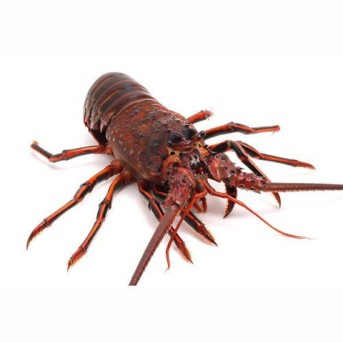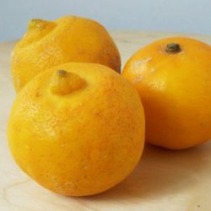
Are you thinking of trying a vegetarian diet in an effort to eat healthier? If you’re concerned about getting enough protein, add more beans to your meals. Beans and lentils are referred to as “pulses,” and are the fruit or seed of plants called legumes. Pulses are used for human and animal consumption or for the production of oils for industrial uses.
Many legumes have symbiotic bacterial that have nitrogen fixing abilities. When these plants die in the field, they can be plowed back into the soil and can serve as fertilizer for other crops.
The United Nations General Assembly has declared 2016 as the International Year of Pulses to heighten public awareness of the nutritional benefits of pulses as part of sustainable food production aimed towards food security and nutrition.
History
Dried beans, peas and lentils have been cultivated for human consumption for ages. Archaeologists have discovered traces of bean cultivation in the Indus Valley that dates to 3300 BC. Meanwhile, evidence of lentil cultivation has also been found in Egyptian pyramids and dry pea seeds have been discovered in a Swiss village that are believed to date back to the Stone Age. Archaeological evidence suggests that these peas must have been grown in the eastern Mediterranean and Mesopotamia regions at least 5,000 years ago and in Britain as early as the 11th century.
Health Benefits
Beans are good sources of protein, excellent sources of fiber, and naturally fat-free, sodium-free, and cholesterol-free. Many types are also good sources of potassium. Beans have a low glycemic index. This makes them an ideal food for the management of insulin resistance, or diabetes. Numerous scientific studies also show that eating beans helps lower blood pressure and reduce cholesterol. U.S. Dietary Guidelines recommend eating about 3 cups of legumes, including beans, per week.
Types of Beans
There are eleven basic categories of pulses:
- Dry beans, which include kidney beans, navy beans, pinto beans, lima beans, butter beans, adzuke and mung beans.
- Dry broad beans.
- Dry peas.
- Chickpeas or garbanzos.
- Dry cowpeas or black-eyed peas.
- Pigeon peas, Congo beans and gandules.
- Lentils
- Groundnuts and earth peas.
- Vetch.
- Lupins
- Miscellaneous minor pulses, like jack beans, yam beans and winged beans.
Preparation
Preparing dried beans takes a little more work than just opening a can, but the flavor and texture is superior to canned beans. First, spread them out on a table, kitchen towel or baking sheet and pick out any shriveled or broken beans, stones or debris. Rinse them well in cold, running water. When you soak them, you help remove some of those indigestible sugars that cause flatulence. So place the beans in a large bowl or pan, cover with water and soak overnight or for about 8 hours in the refrigerator. Rinse and them place them into a large pot and cover with 2 inches of water or stock. (Don’t add salt at this point since that slows the beans’ softening.) Slowly bring to a boil, skimming off any foam on the surface. Reduce heat, cover and simmer, stirring occasionally and adding more liquid if necessary, until beans are tender when mashed or pierced with a fork. Cooking times vary with the variety, age and size of beans; generally you’re looking at about 1 to 2 hours.
After sorting dried peas and lentils, bring 1½ cups water or stock to a boil for each cup of dried lentils or peas. Once the liquid is boiling add the lentils or peas, return to a boil, then reduce the heat and simmer, partially covered, until tender, 30 to 45 minutes.
Culinary Uses for Common Pulses
Adzuki Beans
These little dark red beans are sweet and easy to digest. Splash them with tamari and barley malt or mix them with brown rice, scallions, mushrooms and celery for dynamite, protein-rich rice patties
Black-Eyed Peas
These creamy white, oval-shaped beans are ubiquitous in southeastern US states where they’re a traditional New Year’s dish. Toss them with yogurt vinaigrette, tomatoes and fresh parsley.
Cannellini Beans
These are some of my favorites. Cannellini beans are packed with nutty flavor. Add them to tomato-based soups like minestrone or toss with olive oil and black pepper for a satisfying side dish.
Chickpeas/Garbanzo Beans
This prominent ingredient in Mediterranean, Middle Eastern, and East Indian dishes — think hummus and falafel — has a mild but hearty flavor. Garbanzos are a good foil for strong spices like curry powder, cumin and cayenne pepper, so add them to salads, soups and pasta dishes
Great Northern Beans or Navy Beans
Think of these guys as big teddy bears; they’re the largest commonly available white bean, but they’re all soft and mild on the inside. These are great as baked beans or add them to soups and stews with longer cooking times.
Green Lentils
Ooh la la! These lentils hold their shape well and have deep, rich flavor. They’re an excellent addition to salads, spicy Indian dal or simple lentils and rice.
Green Split Peas
Give peas a chance! Split peas shine in soups where they’re cooked until creamy to bring out their full, sweet flavor. Serve them with a dollop of minted yogurt for an Indian touch.
Kidney Beans
These large, red beans are popular in chili, salads, soups and baked beans. Make sure to cook them until completely tender and cooked through to eliminate the gastric distress-causing toxin that’s present in raw and undercooked kidney beans.
Lima Beans
Thankfully, succulent lima beans are shedding their bad reputation as the food to force-feed kids. Add them to minestrone and other soups or combine them with corn and green beans for succotash
Lupini Beans
At Italian fairs and Spanish beer halls these beans are a popular snack. Technically a member of the pea family, these flat, coin-shaped, dull yellow seeds are second only to soybeans in plant protein content. Use caution when cooking! Lupini beans need a special extensive soaking and brining preparation to ensure removal of potentially harmful bitter alkaloids that occur naturally in the beans.
Mung Beans
You probably know mung beans for their sprouts, but the beans themselves are revered as a healing food. Mung beans range in color from greenish-brown to yellow to black and have delicate, sweet flavor. They need no pre-soaking, cook quickly and are easy to digest; you can’t go wrong.
Pinto Beans
A favorite in Southwest and Mexican dishes — “pinto” means “painted” in Spanish — these earthy beans have a delicious, creamy texture ideal for refrying. Combine with onions, chili powder, garlic and tomatoes as a filling for enchiladas or sauté cooked beans with olive oil, garlic and tamari.
Red Beans
These small, dark red beans are subtly sweet and hold their shape when cooked. They make a great choice for soups and chili and as a companion to rice.
Red Lentils
Don’t be fooled by the name; this variety of lentil isn’t really red. In fact, their soft pink color turns golden when cooked. Note that red lentils cook quickly and don’t hold their shape so they’re best in soups or purées or cooked until creamy with Italian seasonings
Split Peas
While green peas are picked while immature and eaten fresh, dried peas are harvested when mature, stripped of their husks, split and dried. Split peas don’t require presoaking and their mild flavor and creamy texture make good companions to garlic, onions, dill, curry and ginger.
Let’s get cooking!
Resources
www.beaninstitute.com
www.wholefoodsmarket.com

























